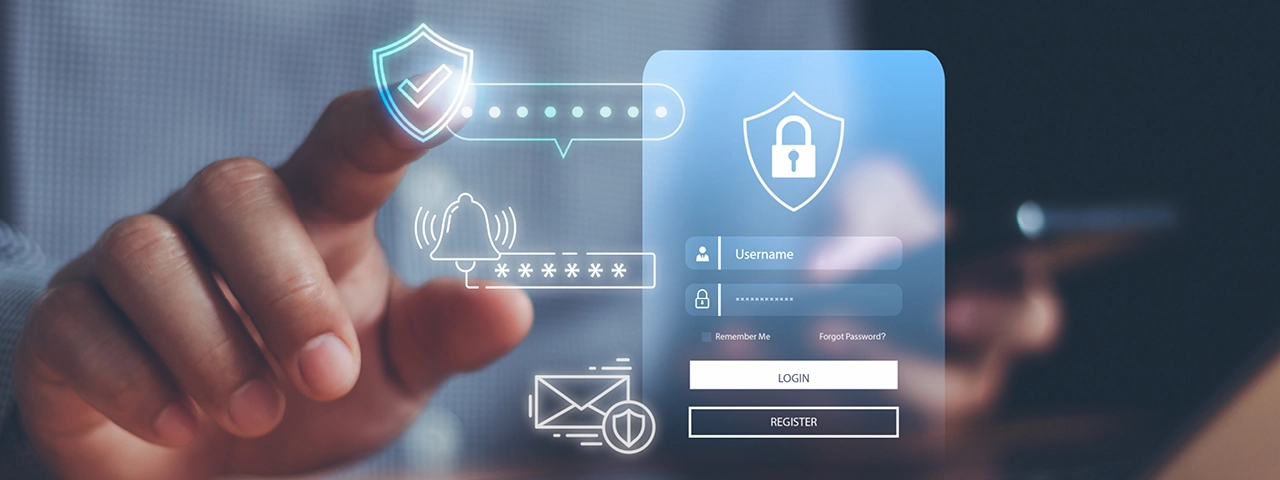How to develop a secure web application? Our top tips!
May 3, 2025
Stefan Grevelink

In a world where cyberattacks are becoming increasingly common, developing a secure web application is more important than ever. Whether you're building a small webshop or a complex SaaS solution, security should not be an afterthought — it must be an integral part of your development process. In this article, we explain why security is essential from the very beginning, highlight the main threats according to the OWASP Top 10, and share practical tips to make your application more secure.
Why building security in from the start is crucial
Security can't be added afterward; it must be considered from the very first design phase. This principle is known as security-by-design. If you only start thinking about security after the application is finished, you risk having vulnerabilities deeply embedded in the architecture. Fixing these issues later can be costly and may require major changes to your code and infrastructure.
Security-by-design means evaluating potential risks and how to mitigate them at every stage — from database design to API structure. This approach prevents security from becoming a barrier and ensures your application is resilient against attacks without compromising on functionality or user experience.
The OWASP top 10: know the most significant threats
To implement effective security measures, you first need to understand where the biggest risks lie. The OWASP Top 10 is a globally recognized list of the most critical vulnerabilities in web applications. This list is regularly updated and includes, for example:
-
Injection attacks such as SQL injection
-
Broken Authentication
-
Sensitive Data Exposure
-
Security Misconfiguration
-
Cross-Site Scripting (XSS)
By being aware of these threats, you can actively avoid them during development. For instance, use parameterized queries to prevent SQL injection, and configure your servers and frameworks securely to avoid misconfigurations. The OWASP Top 10 provides an excellent foundation for building your security strategy.

Best practices for secure code
Secure programming starts with following best practices that help prevent vulnerabilities. Some key examples include:
-
Input validation and sanitization: Never trust user input. Always validate and filter data before processing or storing it.
-
Use of prepared statements: When interacting with a database, this helps protect against SQL injection.
-
Principle of least privilege: Ensure that your application and its components have only the permissions they strictly need.
-
Use of secure libraries and frameworks: Keep dependencies up to date and avoid outdated or unmaintained packages.
-
Error handling without exposing sensitive information: Never show stack traces or technical error messages to end users.
By consistently applying these practices, you significantly reduce the risk of common vulnerabilities.
Correctly implementing authentication and authorization
Although the terms are often used interchangeably, authentication and authorization mean different things:
-
Authentication is about who you are: It's the process by which a user proves their identity, for example, with a password or multi-factor authentication.
-
Authorization is about what you can do: It's the process that determines which actions or data an authenticated user is allowed to access or perform.
Both processes are crucial and must be implemented correctly. Some tips:
-
Use proven authentication providers or frameworks instead of building your own.
-
Implement multi-factor authentication (MFA) to enhance security.
-
Limit access rights based on the principle of least privilege.
-
Use role-based access control (RBAC) to keep authorization clear and scalable.
A weak implementation of authentication or authorization can lead to severe data breaches or unauthorized access to systems.

Regular testing and monitoring for vulnerabilities
Even with a strong focus on security during development, it's essential to regularly test and monitor your application. Vulnerabilities can arise from new code, changed dependencies, or evolving attack techniques.
That's why penetration testing (pentesting) is a crucial part of your security strategy. It simulates real-world attacks to identify weaknesses. Combine this with continuous monitoring, such as deploying a Web Application Firewall (WAF) and analyzing log files for suspicious activities.
Automated tools like dependency scanners and vulnerability scanners can help you quickly discover known vulnerabilities. However, don't forget that manual code reviews and tests are just as valuable for identifying complex or logical vulnerabilities.
Conclusion
By taking security seriously from the beginning and actively maintaining it, you not only build a secure application but also gain trust from your users and stakeholders. Security is not a one-time action, but an ongoing process – and with the right approach, you'll always stay one step ahead of potential attackers.

Want to learn more?
Contact Stefan!
Do you not check our website daily for the latest tips? No problem! You can also follow us on our social media channels. We regularly share updates, useful facts and a behind-the-scenes.